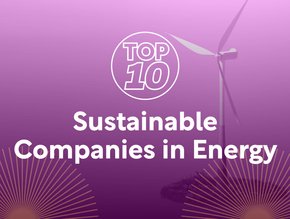Top 10 Global Energy Review findings

As the world enters a second year of the Covid-19 pandemic, the annual Global Energy Review assesses the direction energy demand and carbon dioxide emissions are taking in 2021. The latest statistical data and real-time analysis confirm our initial estimates for 2020 energy demand and CO2 emissions while providing insights into how economic activity and energy use are rebounding in countries around the world – and what this means for global emissions.
The accelerating rollouts of Covid-19 vaccinations in many major economies and widespread fiscal responses to the economic crisis are boosting the outlook for economic growth and leading to a rebound in energy demand in 2021. The report explores whether the rebound in activity risks pushing CO2 emissions to a new high and to what degree new policies targeting a sustainable recovery are able to curb a rebound in emissions.
The pace of global vaccine rollouts, the possible emergence of new variants of the Covid-19 virus, and the size and effectiveness of economic stimulus measures all represent major uncertainties for the outlook. This analysis therefore not only charts a possible path for energy use and CO2 emissions in 2021 but also highlights the many factors that could lead to differing outcomes. Here are the top 10 key findings from the report.
10: China likely to account for almost half of global increase in renewable electricity generation
China, which is followed by the United States, the EU and India, is expected to generate over 900 TWh from solar PV and wind in 2021, the EU around 580 TWh, and the United States 550 TWh. Together, they represent almost three-quarters of global solar PV and wind output.
09: Renewables set to provide more than half of the increase in electricity supply in 2021
Solar PV and wind are expected to contribute two-thirds of renewables’ growth. The share of renewables in electricity generation is projected to increase to almost 30% in 2021, their highest share since the beginning of the Industrial Revolution and up from less than 27% in 2019. Wind is on track to record the largest increase in renewable generation, growing by 275 TWh, or around 17%, from 2020. Solar PV electricity generation is expected to rise by 145 TWh, or almost 18%, and to approach 1,000 TWh in 2021.
08: Renewables remain the success story of COVID-19 era
Demand for renewables grew by 3% in 2020 and is set to increase across all key sectors – power, heating, industry and transport – in 2021. The power sector leads the way, with its demand for renewables on course to expand by more than 8%, to reach 8,300 TWh, the largest year-on-year growth on record in absolute terms.
07: Electricity demand is heading for its fastest growth in 10 years
Electricity demand is due to increase by 4.5% in 2021, or over 1,000 TWh. This is almost five times greater than the decline in 2020, cementing electricity's share in final energy demand above 20%. Almost 80% of the projected increase in demand in 2021 is in emerging market and developing economies, with the People's Republic China alone accounting for half of global growth. Demand in advanced economies remains below 2019 levels.
06: Natural gas is on course for biggest rise relative to 2019
Natural gas demand is set to grow by 3.2% in 2021, propelled by increasing demand in Asia, the Middle East and the Russian Federation. This is expected to put global demand more than 1% above 2019 levels. In the US – the world’s largest natural gas market – the annual increase in demand is set to amount to less than 20% of the 20 bcm decline in 2020, squeezed by the continued growth of renewables and rising natural gas prices. Nearly three-quarters of the global demand growth in 2021 is from the industry and buildings sectors, while electricity generation from natural gas remains below 2019 levels.
05: Global coal demand approaching 2014 peak
Coal demand is on course to rise 4.5% in 2021, with more than 80% of the growth concentrated in Asia. China alone is projected to account for over 50% of global growth. Coal demand in the United States and the European Union is also rebounding, but is still set to remain well below pre-crisis levels. The power sector accounted for only 50% of the drop in coal-related emissions in 2020. But the rapid increase in coal-fired generation in Asia means the power sector is expected to account for 80% of the rebound in 2021.
04: Sluggish oil transport demand mitigates emissions rebound
Despite an expected annual increase of 6.2% in 2021, global oil demand is set to remain around 3% below 2019 levels. Oil use for road transport is not projected to reach pre-Covid levels until the end of 2021. Oil use for aviation is projected to remain 20% below 2019 levels even in December 2021, with annual demand more than 30% lower than in 2019. A full return to pre-crisis oil demand levels would have pushed up CO2 emissions a further 1.5%, putting them well above 2019 levels.
03: Global CO2 emissions heading for second largest annual increase
Demand for all fossil fuels is set to grow significantly in 2021 and coal demand alone is projected to increase by 60% more than all renewables combined, underpinning a rise in emissions of almost 5%, or 1,500Mt. This expected increase would reverse 80% of the drop in 2020, with emissions ending up just 1.2% (or 400 Mt) below 2019 emissions levels.
02: Emerging markets are driving energy demand
Global energy demand is set to increase by 4.6% in 2021, more than offsetting the 4% contraction in 2020 and pushing demand 0.5% above 2019 levels. Almost 70% of the projected increase in global energy demand is in emerging markets and developing economies, where demand is set to rise to 3.4% above 2019 levels. Energy use in advanced economies is on course to be 3% below pre-Covid levels.
01: COVID continues to impact energy demand
Third waves of the pandemic are prolonging restrictions on movement and continue to subdue global energy demand. But stimulus packages and vaccine rollouts provide a beacon of hope. Global economic output is expected to rebound by 6% in 2021, pushing the global GDP more than 2% higher than 2019 levels.






